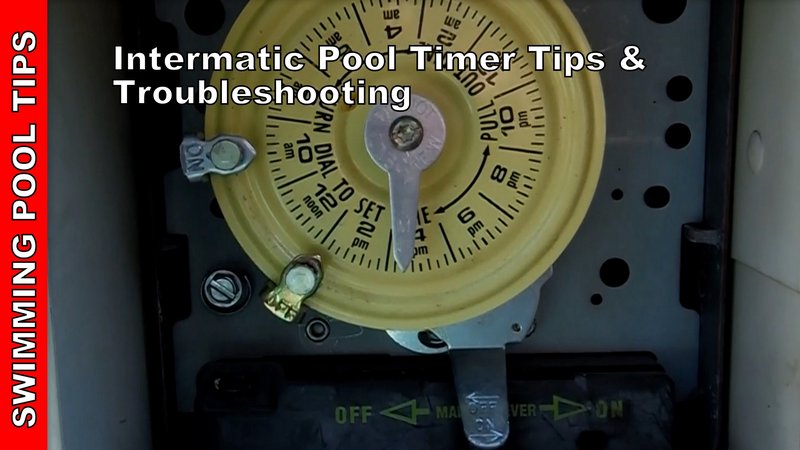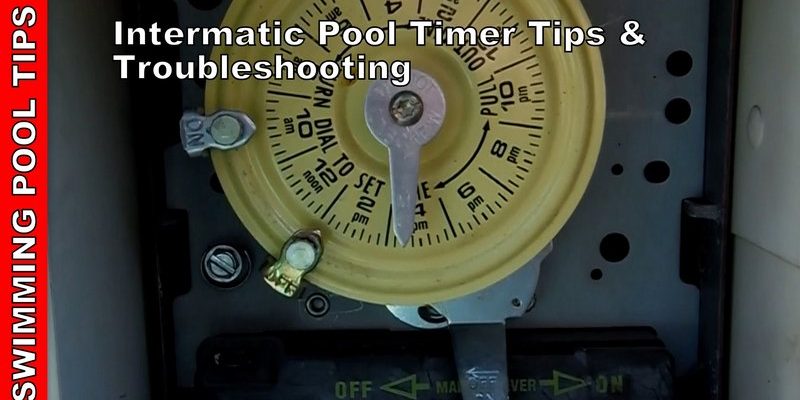
Intermatic has made a name for itself with reliable pool automation gear—especially its handheld remotes, wall panels, and wireless controls. But just like any tech, even solid brands hit the occasional snag. Maybe the remote won’t sync, the buttons feel dead, or the pool just doesn’t listen. If you’ve ever found yourself waving your Intermatic remote around in frustration, you’re in the right spot. Let’s roll up our sleeves and walk through the most common troubleshooting tips, all in plain language—no technical jargon, just simple, real fixes.
Understanding How Your Intermatic Pool Remote Works
Let’s start at square one. Your Intermatic pool remote is designed to control features like pumps, heaters, lights, and sometimes even landscape extras—all from the palm of your hand. Think of it as a universal command center for your backyard’s watery playground. The remote connects to a receiver, either wired or wireless, which “talks” to all the pool equipment.
Most Intermatic remotes use simple button presses to send signals. If you’ve ever used a garage door opener or a TV clicker, the idea is pretty similar: you press a button, a little bit of code zips through the air, and the receiver acts on your command. The catch? That signal chain has lots of places where things can get stuck—dead batteries, interference, outdated programming, or even plain old mechanical wear.
Understanding this setup helps you think like a detective. When something’s not working, you can check each part: Is the remote powered? Is the receiver getting the message? Are the settings correct? With that mindset, troubleshooting becomes less of a headache and more like piecing together an easy puzzle.
Common Remote Problems and Their Quick Fixes
Let me guess: the most frustrating issues are always the ones that seem like they should be simple. The pool’s not responding, or the remote itself just won’t light up or beep. Here’s the thing—most of these problems have straight-shooting fixes.
- Dead or Weak Batteries: Honestly, this gets more people than you’d think. If your Intermatic remote is unresponsive or only works when you stand next to the receiver, swap out the batteries. Even if you think they’re “fresh,” weak batteries can reduce signal range and reliability.
- Stuck Buttons or Worn Keypads: Sometimes sunscreen, pool water, or just years of use can gum up the buttons. If pressing them feels squishy or unresponsive, give the remote a gentle wipe-down. In stubborn cases, you might need a deeper clean—just don’t use harsh chemicals, and never soak it.
- Signal Interference: Wireless remotes can compete with everything from garage openers to neighbor’s Wi-Fi. If you notice spotty performance, try changing locations or turning off other nearby electronics as a quick test.
If none of these do the trick, don’t panic. Most issues are basic but sometimes pile on top of each other in sneaky ways—like a low battery plus a stuck button.
Syncing and Pairing Your Intermatic Remote
Every so often, your remote and the receiver just stop speaking the same “language”—maybe after replacing batteries, power outages, or a system reset. In Intermatic-speak, you’ll often hear about needing to pair or sync the remote with its base unit. Don’t let the words trip you up; it’s really just about teaching the two devices to recognize each other again.
Usually, you’ll need to:
- Press and hold a specific button (often labeled “learn,” “pair,” or “reset”) on the receiver unit.
- At the same time or soon after, press or hold a button on your handheld remote.
- Wait for a light to blink or a beep to sound—that’s the sign you’re in business.
Each Intermatic model has its own code dance, so it’s worth glancing at your manual or looking up your device online for exact steps. Here’s a tip: if syncing fails, make sure batteries are good and both units are within a close range (sometimes just a few feet apart). Also, double-check that nothing is blocking the signal.
If you run into trouble with the sync or pairing process, start over slowly—sometimes pressing buttons out of order or rushing can cause the units to “miss” each other. Think of it as getting two friends to shake hands at the same time; if one’s late, it just doesn’t work.
Resetting Your Intermatic Pool Remote System
Sometimes, you just need a fresh start. If nothing else is working, a system reset can clear up weird glitches, corrupt codes, or stubborn pairing issues. Resetting wipes out stored settings, so you’ll need to reprogram your remote afterward. But don’t worry—it’s not as scary as it sounds.
Here’s a typical Intermatic reset flow:
- Find the reset button—this could be a pinhole on the remote or a button on the main controller or receiver.
- Press and hold the button for 10–20 seconds, or as directed by your model’s instructions.
- Release and wait for the LED or display to flash or beep (that’s your confirmation).
- Re-pair your remote to the receiver as described in the previous section.
A good reset is like restarting your phone—it clears up weird background errors. But always recheck your system afterward to make sure everything is working as expected. If you have programmable settings (like custom light shows or scheduled pump cycles), take a photo or jot down what you want to save before resetting.
Sometimes, repeated reset attempts can indicate a deeper hardware problem—like a faulty receiver board or water damage. If you’re stuck in a reset loop, it could be time to call in a pro or check your device warranty.
What To Do When Your Remote Won’t Control Pool Features
It’s extra annoying when some buttons work and others don’t, or when your Intermatic remote controls the lights but can’t kickstart the spa jets. When this happens, you might wonder: is the problem in the remote, the receiver, or the pool gear itself?
Here’s how to play detective:
- Test Each Button: Try pressing all the buttons, one by one. If only one or two don’t work, the issue might be a worn-out keypad or stuck contact. Sometimes, cleaning (as mentioned before) or reprogramming solves this.
- Check The Features: Can you control the stubborn pool feature manually (using the equipment panel by the pool)? If yes, the remote is at fault. If not, you may have a bigger problem with the equipment itself—maybe a tripped breaker, blown fuse, or mechanical jam.
- Try a Manual Override: Many Intermatic systems let you control each circuit using manual switches on the main panel or receiver. If those work, but the remote does not, the issue is with signal or programming.
Little quirks can pop up after storms, power surges, or even software bugs during code updates (if your receiver is “smart”). In rare cases, certain features might need to be “enabled” in settings before you can use them remotely.
When To Replace or Upgrade Your Remote
Here’s the truth: sometimes, no amount of troubleshooting will revive an old or damaged Intermatic pool remote. These gadgets live a tough life—between sun, water splashes, and the occasional drop in the deep end, wear and tear is real.
Some surefire signs it’s time for a replacement:
- Buttons stop responding after cleaning and new batteries.
- The display (if your model has one) is blank, fuzzy, or flickering.
- You hear crackling or static noises when pressing buttons.
- Repeated syncing or resets don’t help.
If you’re shopping for a replacement, consider whether a universal pool remote or another Intermatic model suits your setup. Universal remotes can be great if you have gear from several brands, but they’re not always as “plug and play” as the originals—sometimes, extra pairing or code entry is needed. Always double-check compatibility with your receiver.
Investing in a weatherproof or updated model can make all the difference—especially if you want features like longer range, brighter displays, or even smartphone integration with newer Intermatic systems.
Comparing Intermatic Remotes With Other Pool Remote Alternatives
You might be wondering, “Is there something better out there?” Here’s my take: Intermatic remotes are solid, but there are other options if you’re ready to upgrade or need a backup. Some pool owners switch to universal pool remotes, or even smart home devices with dedicated pool apps.
- Universal Pool Remotes: Handy if you have mismatched brands for lights, pumps, or controls. They require some setup—usually entering a code or syncing with each receiver. These can save a headache if you lose your original remote.
- Smartphone Pool Controls: Some new pool systems connect through Wi-Fi, letting you use an app to control everything. Honestly, these are like moving from a flip phone to a smartphone. But you’ll need compatible gear, and sometimes, a little more patience during the initial setup.
- Manual Controls: It’s old-school, but physical switches and timers on the main panel never need batteries or syncing. Not as convenient, but sometimes the most reliable in a pinch.
If you crave simplicity and don’t want to fuss with tech, sticking with Intermatic’s basic remotes is a safe bet. But if you love gadgets and want total control from anywhere (even on vacation), it could be time for an upgrade.
Protecting Your Remote From Future Troubles
Here’s a little wisdom earned the hard way: don’t just fix your Intermatic remote—protect it from future headaches. These remotes aren’t exactly cheap or waterproof, so a bit of care goes a long way.
- Keep It Dry: A splash-resistant case or storing it indoors can add years to its life. Even “weather-resistant” remotes aren’t meant for pool dunking.
- Regular Battery Checks: Mark your calendar to check batteries seasonally. Corroded contacts from leaking batteries can kill a remote faster than a cannonball splash.
- Clean Gently: Wipe off sunscreen or sticky fingers before use. Debris under the buttons leads to stuck keys and erratic behavior.
- Store Away From Heat: Don’t leave your remote baking on a patio chair or pool ledge. Extreme heat can warp plastic, fade buttons, or even damage internal code chips.
A little TLC can save you from troubleshooting headaches—and might just keep your backyard oasis running smoothly all season long.
Let me say this: troubleshooting doesn’t have to be a chore. Keep things simple, tackle one issue at a time, and remember, even the best gadgets need a little human help now and then.
If you stick with these troubleshooting tips for your Intermatic pool remote, you’ll spend less time fiddling with buttons and more time actually enjoying your pool. Sometimes, it’s just a matter of stepping through the basics—batteries, syncing, resets, and a bit of preventive care. And if you ever reach the end of your rope, remember: upgrades and alternatives are out there, and you’re never stuck without options. Happy swimming!
